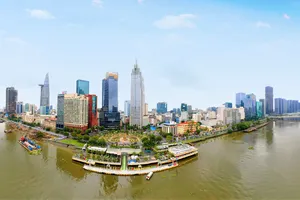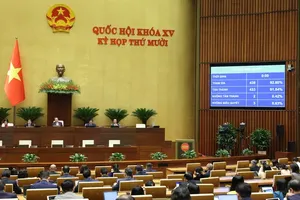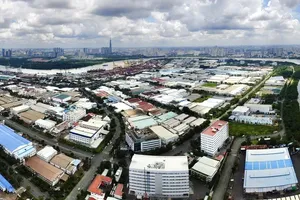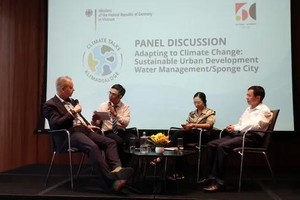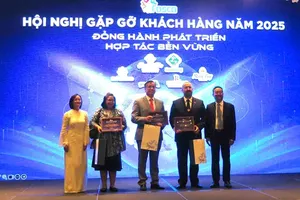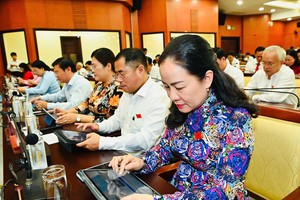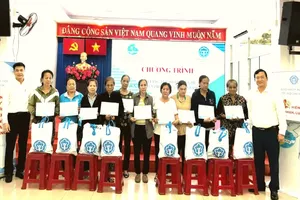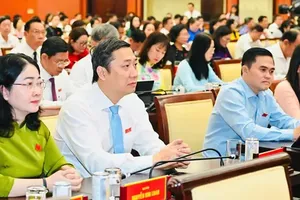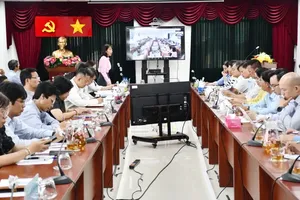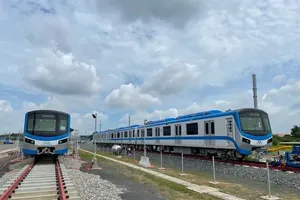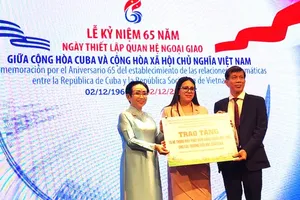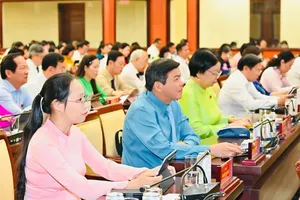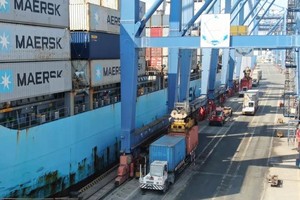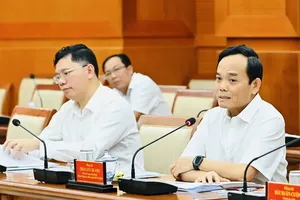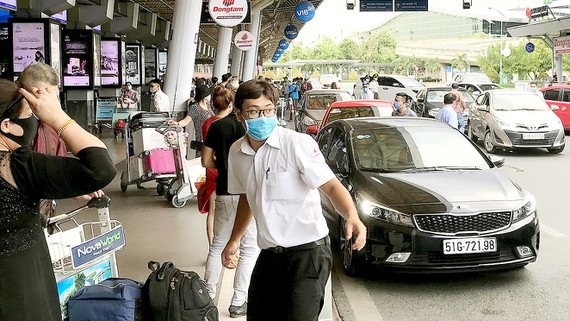
These days, to enter the domestic terminal of the airport, after exiting Truong Son Road, most taxi drivers must slam on their brake in order to turn left into Lane D instead of going straight ahead like they used to. This poses great danger to road users as many drivers are still not familiar with the new route, making the traffic flow more stuck.
After adjustment, Lane A now is reserved only for passengers coming to the airport. Lanes B and C are only for private cars to pick up passengers. All these vehicles are allowed to stop for no more than 3 minutes. All these lanes have very light traffic.
In contrast, Lane D, which is reserved for both traditional and tech-based taxis, is constantly facing congestion despite having 12 stops. Adding to this problem is the issue of taxi drivers trying to fight over passengers, leading to disorder and unsafety.
The situation is even worse in the TCP Park, where passengers usually wait for their tech-based taxis like GrabCar or BeCar. Some drivers shared that they have to pay VND25,000 (approx. US$1.2) for parking fee to wait for their customer. Meanwhile, passengers do not have a better case as they often need to wait for a long time, even 1 hour sometimes, to spot the precise taxi they ordered.
The reason is that among a crowd of cars, it is so challenging for customers to find the location of their own taxi; yet, these taxis are now allowed to stop for more than 3 minutes. This means drivers and passengers must maintain their communication all the time just to find each other, which is a true nuisance, not to mention the heavy luggage.
The story does not stop there, as tech-based taxi drivers request their customers to pay an extra of VND15,000 ($0.65) parking admission fee and VND10,000 ($0.43) toll. This is illogical because passengers themselves do not use parking services.
It seems that this traffic regulation scheme has displayed its inadequacy towards both travellers and tech-based taxis.
According to Mr. Ngo Hai Duong, Head of the Land Infrastructure Management Division under the HCMC Department of Transport, the traffic flow in front of the airport has seen improvement when applying the regulation program.
Regarding traditional and tech-based taxis, there is now no case of drivers fighting over some passengers like before.
However, to provide more convenience for travellers and taxi drivers, the HCMC Department of Transport has already sent its request for Tan Son Nhat Airport to more sensibly rearrange the in and out flows to ensure order and safety for airport visitors.
Mr. Duong shared that the adjustment scheme for internal road routes of the airport is an agreement among the airport’s management board, the HCMC Department of Transport, HCMC Police Department and the People’s Committee of Tan Binh District.
At present, related state units have finished installing traffic signs and posters in catchy locations to deliver proper guiding. Vehicles entering and exiting the airport need to strictly follow these instructions to travel in correct lanes. Additionally, to reduce congestion in front of the airport, drivers are suggested to park their cars in TCP Park.
Receiving feedbacks from passengers and taxi drivers, the Civil Aviation Authority of Vietnam asked that the Southern Airports Authority recheck the current status of passenger picking-up activities in Tan Son Nhat Airport, especially concerning taxis.
The airport also reported a clearer front for private vehicles. As to parking space for tech-based taxis, traditional taxi companies have signed contracts with the airport, meaning they should be prioritized to use Lane D for public transport.

